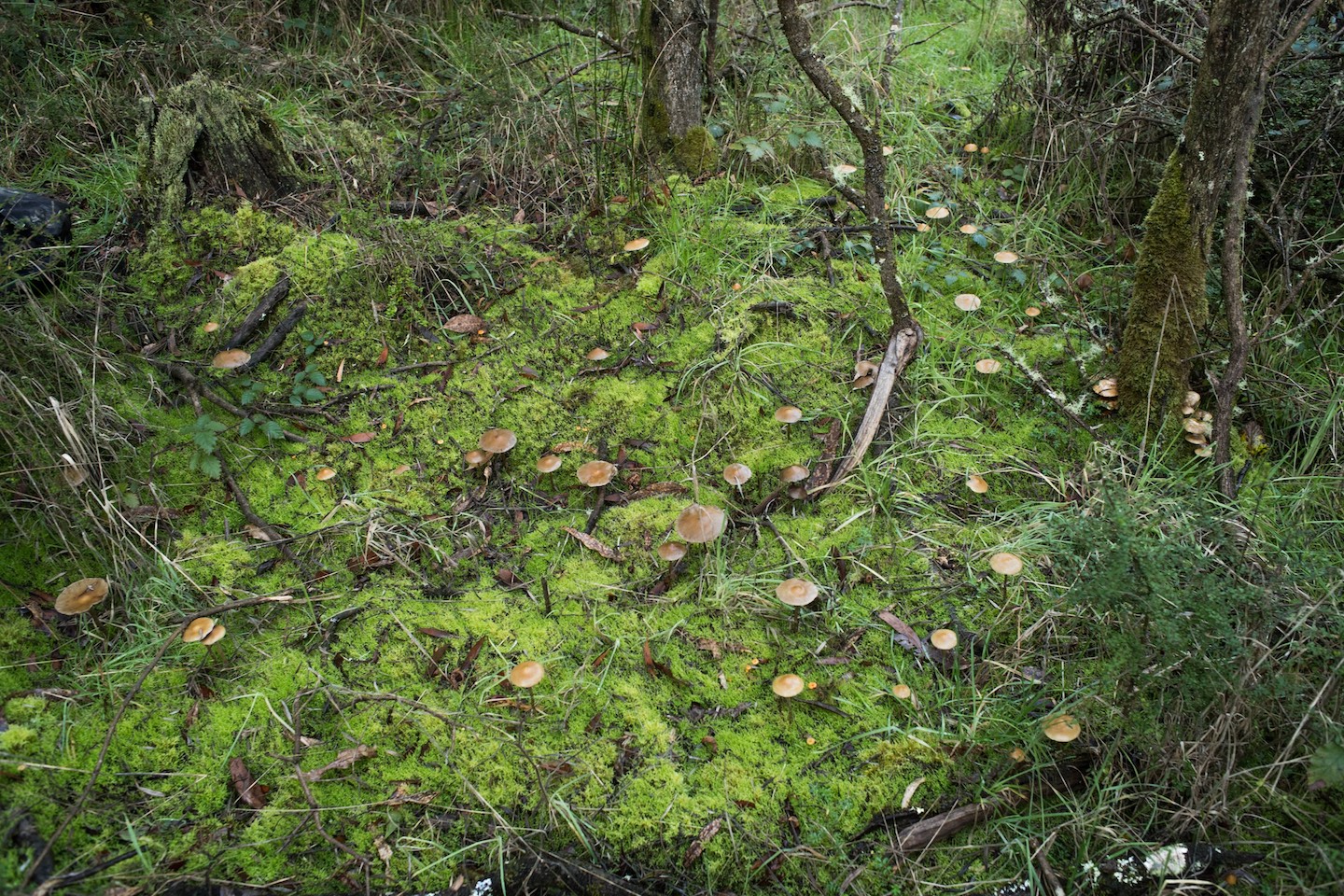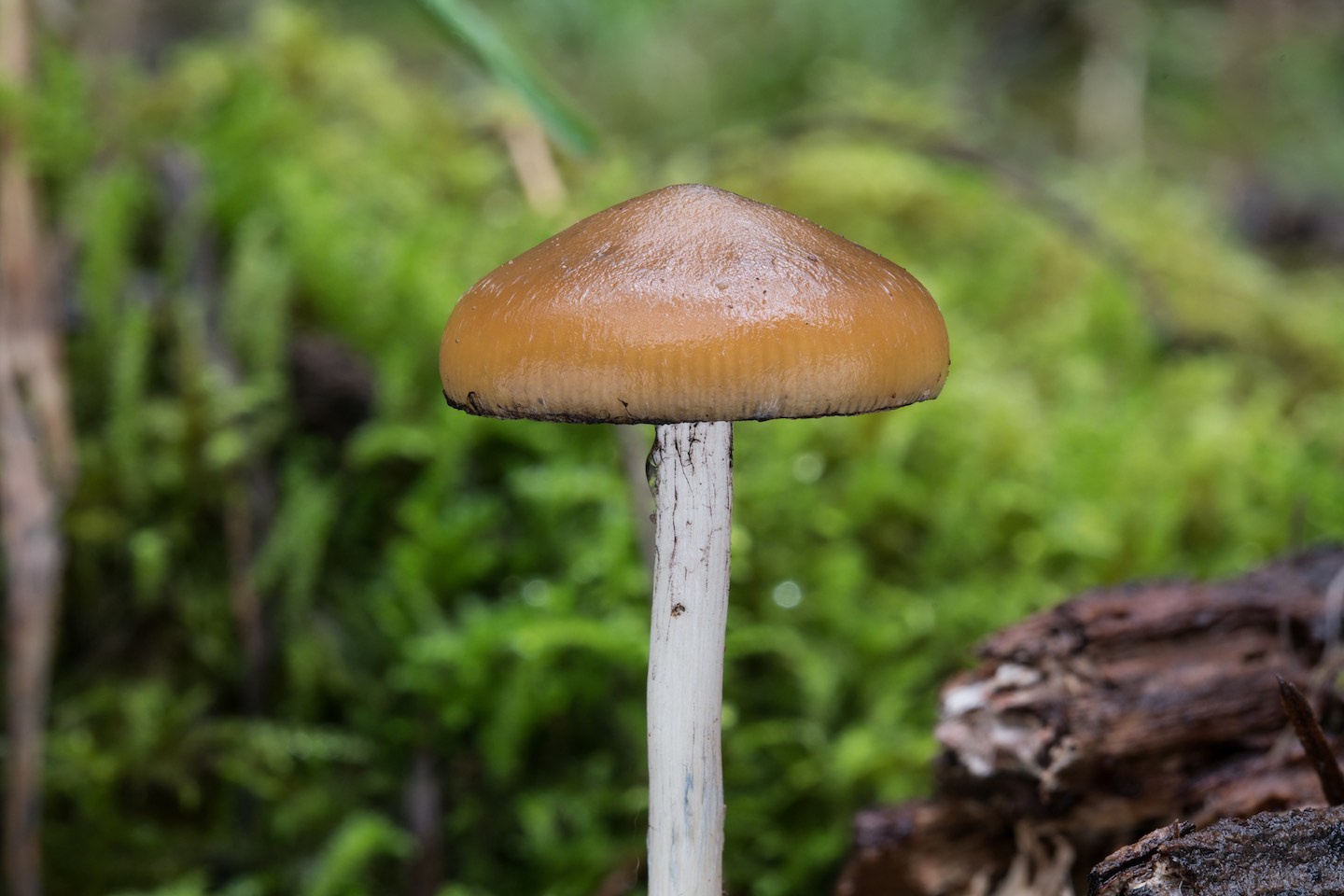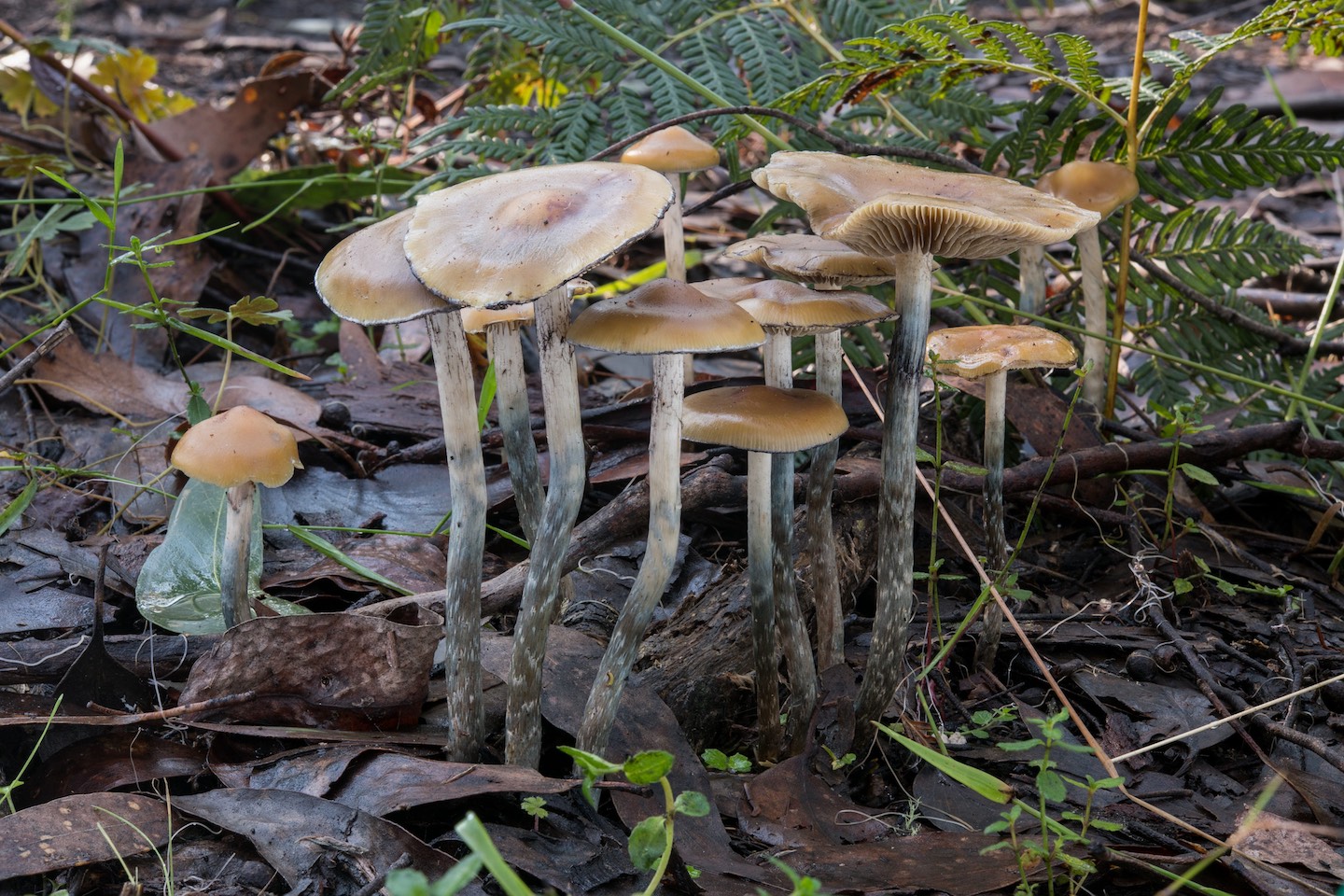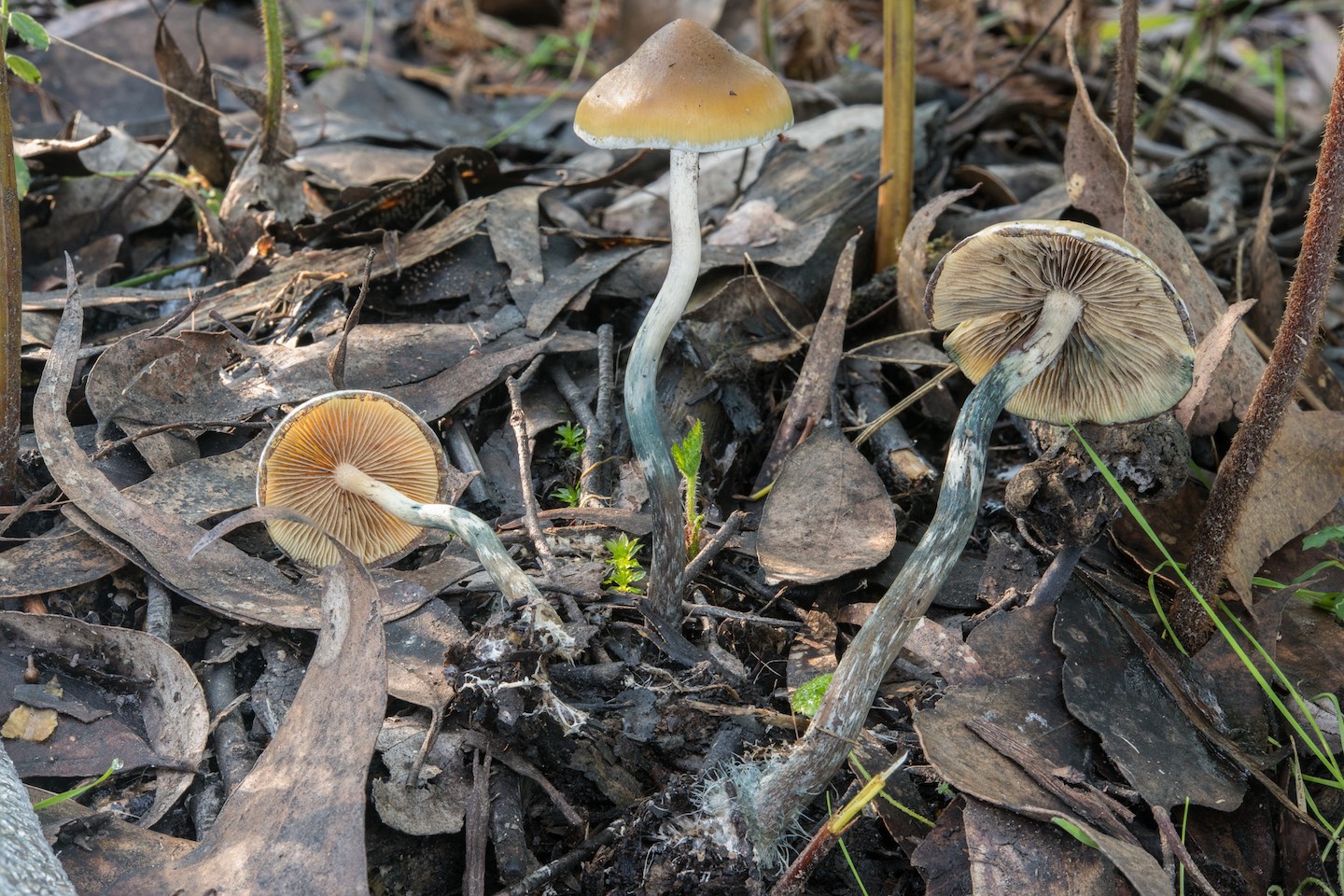Magic mushrooms are some of the safest recreational drugs around. Out of a survey of more than 12,000 people who did shrooms in 2016, just 0.2 percent said they needed emergency medical care—a rate that was five to six times lower than LSD, cocaine, MDMA, and alcohol, and three times lower than weed.
There are always outliers though. In recent years, certain species of mushrooms found across the world have been reported to cause a strange and terrifying side-effect known as “wood-lovers paralysis” where a person suffers muscle weakness or complete loss of motor function several hours after dosing.
We spoke with several users from New South Wales and Victoria who have experienced this to understand more. All of them, understandably, wish to remain anonymous.
“I peed my bed while I was completely paralysed,” recalls one user.
“My legs were buckling under me—it was honestly like The Wolf of Wall Street when he is trying to drive that car,” says another.
A third user, who was alone on a bushwalk when the effects kicked in, recalls that “at first I was sort of laughing thinking it was a bit funny—but it advanced really quickly, within a couple of minutes, and I struggled to stay on my feet. I was struggling to hold a phone and even hold my head up at times”. In that case, the person called their wife and was promptly taken to hospital.
Each of these trip reports, while strikingly similar, paints a picture that doesn’t quite line up with more typical accounts of the psychedelic experience. So what exactly is going on here?
The short answer is we don’t really know. Researchers have come up with a number of elaborate hypotheses over the years, based on anecdotal evidence and scientific extrapolations, in an attempt to explain this strange and little-understood phenomenon. None of them have gotten very far.
What is wood-lovers paralysis?

Wood-lovers paralysis (WLP) is so-called because it appears to be caused exclusively by mushrooms that grow on wood. The effect has been most commonly linked with three species of the fungus: Psilocybe azurescens, Psilocybe cyanescens, and Psilocybe subaeruginosa.
These species are amongst the most powerful mushrooms in the world due to their high psilocybin content. P. azurescens and P. cyanescens are found mainly on the West Coast of the United States while P. subaeruginosa is generally found in Southern Australia and New Zealand. They are difficult to cultivate indoors, so are usually foraged outside, and are so closely related that it’s unclear whether they are in fact distinct species at all.
Typically, WLP is a partial to full-body muscular paralysis that seems to come on a few hours into a mushroom trip. Users report feeling weakness in their facial muscles first, but it can also start in the extremities, with the feet or the hands. For some it stays relatively minor, but others have found it can spread across their whole body, leaving them unable to do anything but lie on the floor, totally unable to move, for up to several hours.
While there have been limited reports of breathing difficulty, this doesn’t seem common. Users have also reported residual muscular weakness the following day, which generally clears up with no long-term effects.
Do we know what causes it?

There is currently no scientific explanation for what is going on here, nor any current research investigating the phenomenon. Of the mycologists VICE contacted for this piece—that is, people who specialise in the study of mushrooms and fungi—none were aware of WLP or could offer an explanation.
It first came to our attention through the rumours and reports on forums and social media from concerned users seeking answers about the unexpected experience they just had. They generally go away with more questions than answers.
All that can be said for sure is that WLP is uncommon, irregular, and largely unheard of, even among experienced users. Many of the people who’d experienced the effect told VICE they had no idea what was happening to them at the time, and were understandably pretty freaked out.
One user from NSW who we met on Facebook had taken mushrooms for over 15 years without incident when he was struck down by a case of WLP.
“I didn’t think I was actually going to wake up,” he recalls. “My hands were all like claws and my jaw felt like it was sitting on the side of my face.”
He decided he’d try and sleep it off—but walking the 200 metres to his car took him an hour, and when he got there he couldn’t even open it.
“There was just no comprehension between my brain and my hands,” he says. “I knew what I had to do but [my body] just wouldn’t do it”.
The seemingly random nature of the condition further adds to the mystery. Certain places where the mushrooms are picked have been identified as routinely causing issues, while others never do. Individuals report sharing the same batch of shrooms with a group and having only a number of them affected.
Symon Beck is a medical doctor with an interest in WLP, and one of the admins of the popular Facebook group Psychedelic Mushrooms of Australia and New Zealand (PMANZ). Recently Simon posted a “public safety announcement” on this “potentially terrifying phenomenon” and says he was “pretty amazed” at the response to his post, which now has hundreds of comments from people sharing their own experiences.
“I don’t personally know that many people who have experienced it,” he says, and notes it has never been mentioned to him in a medical context either. “We just want to get an idea of how often this is happening, and get some idea of the environmental factors that are involved where people have picked the mushrooms that have caused this.”
What are some theories?

There are only a couple of articles online offering theoretical explanations for WLP, but the prime candidate seems to be a chemical called aeruginascin. This little-understood molecule is one of a handful of psilocybin alkaloids: the naturally occurring chemicals in magic mushrooms that are thought to give each species a slightly different psychoactive effect. Perhaps ironically, it’s also recently started being touted as a cure for bad trips.
Dr Andrew Chadeayne—CEO of American company CaaMTech, which investigates the potential benefits of chemicals other than psilocybin in psychoactive mushrooms—tells VICE “it would make sense” that aeruginascin might cause WLP because of its structural similarity to bufotenidine: a toxin present in certain toad species that is known to cause paralysis.
“They're really similar molecules,” Dr Beck agrees, adding that in his experience, WLP “feels like a neuromuscular blocker.” This means that something is potentially stopping the signals sent from the brain to the muscles at the point where the nerves make contact, just as bufotenidine has been shown to do at the nicotinic receptors.
When VICE put the theory to Dr Cheadyne that aeruginascin could block neuromuscular receptors, he responded by saying that “activity at nicotinic acetylcholine receptors at the neuromuscular junction makes perfect sense”. He hastened to point out, however, that all of this is highly speculative as there are no studies that show the total chemical composition of psilocybe species.
Where does that leave us?

Until we can get further research conducted on the mechanism at play here, speculation is all we have. Further research into the effect that aeruginascin has on the neuromuscular system might be key in explaining the mystery of WLP—and fortunately, scientists have this year been able to synthesise the chemical, making it much easier to study.
Pinpointing the mechanism behind WLP could also have value beyond harm reduction. As Dr Beck points out, the discovery of “something that can cause paralysis of all of the peripheral skeletal muscles without affecting breathing” would be a “game-changer” in general anaesthesia.
From a safety standpoint, he stresses that “people need to be really aware of the on-and-off nature of it and the risks that that can pose in terms of accidents”—but also notes that “choking would be the only other sort of major concern that I could think of from a health perspective”.
Psychologically, though, the effect can be traumatic, with one user describing the random nature of the condition as “like playing Russian roulette.”
“I wish I had known about it before the first time it happened to me, because I think that would have alleviated the anxiety,” Dr Beck says. “You don't want to have to sit there for six hours convincing yourself that you either are or aren't going to die.”
Ultimately, the best advice he can give is to simply be aware “that these things can actually happen.” In the event that one does find themselves struck down by a case of WLP, Dr Beck suggests an exercise in mindfulness.
“Reassure yourself: it has happened to other people before, and they've come out the other side of it as well.”
from VICE https://ift.tt/2YqXrv7
via cheap web hosting
No comments:
Post a Comment